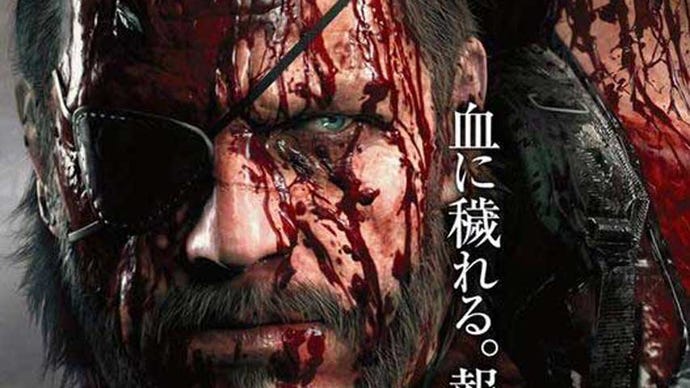15 beginner's tips for playing Metal Gear Solid 5: The Phantom Pain

15 beginner's tips for playing Metal Gear Solid 5: The Phantom Pain
Whether you're a newcomer to the stealth genre or a Metal Gear Solid veteran, there's no denying that knowing how to survive and making the most of your options is what makes Metal Gear Solid special.
Let's go over the 15 most crucial tips you need to know before jumping in, and be sure to bookmark our full MGS5: The Phantom Pain guide while you're at it.
Here we go.

01: Find a good vantage point
Before you even consider entering a camp to extract someone or look for intel, you need to find a good vantage point to get the lay of the land. This is helpful for two reasons: the first is that it will help you form an exit strategy – an essential part of most extraction missions.
The other is that it will provide a good place for you to use your binoculars, which you’ll need to mark enemies and points of interest.
Thankfully both Afghanistan and Africa offer a lot of mountains and small hills overlooking your objectives, so finding a vantage point won’t be a challenge.

02: Scan and mark everything with your binoculars (Int-Scope)
Once you’re set up on a perch, bring up your binoculars and scan the environment. You can click the right stick to zoom in or out. Alternatively, you can click up or down on the d-pad for a variable zoom. You can tag an unlimited number of soldiers, vehicles, and other objects.
Make sure you tag everything, because silhouettes persist through walls, meaning you will always know when someone is about to sneak up on you.
The first upgrade for the binoculars lets you analyse enemies so you can check if you need to fulton them or get rid of them. The Int-Scope also has a microphone that can be used to gain intel just by listening in on soldiers talking.

03: Do the interpreter missions as soon as you can
One of the very first missions you’re going to get in the game asks you to track down an interpreter. This happens in Afghanistan and Africa, and given the number of different languages spoken in each region, you’re going to need to capture a few of them.
This should be your first order of business, as it will allow you understand what the enemy is saying and will more often than not lead you to key items around the map.
The most important reason though is that when you choke hold someone, you’re able to interrogate them and gain invaluable information which range from prisoner and resources locations, to weapon prototypes and side objectives.

04: Choke hold more often
Don’t be afraid to lead an enemy away from the pack and choke hold him for interrogation. In fact, you should at least do this for a two or three soldiers in each camp to get the bigger picture. You can even have them call on their team mates, which is great if you’re planning an ambush.
If you tranquillise someone by mistake and still want to gain some intel, a quick kick with your CQC button will wake him up. You can then proceed to choke hold him and make him sing.

05: Tranquillise more, kill less
Put it this way, you don’t earn anything extra from killing enemies. So don’t kill anyone unless you have to. Unconscious enemies can be woken up to be shaken for intel, and can easily be fultoned back to Mother Base if you need them.
Which brings us to the next point, fultoning.

06: Fulton valuable stuff
The Fulton is a great device that sends almost all items flying back to Mother Base. This applies to soldiers, too. Once you’ve unlocked the first upgrade for your Int-Scope, you’ll be able to determine if who you’re looking at can be useful back at base. This binocular upgrade needs to pushed further though, to increase the range of skill sets you can see.
As for the fulton device itself, the very last upgrade allows you send heavy items like AA emplacements and material containers back to base. So make sure you prioritise it over other stuff.
Soldiers, animals, gun emplacements, everything has a use at Mother Base. And if it doesn't, you can always sell it.

07: Always explore your surroundings for materials
A major part of The Phantom Pain is the Mother Base and upgrades meta-game. Now that you have gathered soldiers from the field and converted them to work for you, they will need resources to upgrade your weapons and items, or develop new ones.
In addition to weapon prototypes, you will be looking for five different materials scattered around the world, each is marked by a different colour in briefcase-looking boxes.
You also should harvest the various herbs you come across, which will later be used by the medical team, as well as being needed to build and upgrade your stuff. If you bring on your D-dog buddy, he’ll automatically highlight them on the map.

08: Upgrade the R&D and base development platforms first
Upgrading which Mother Base platform first largely depends on your play-style. But speeding up the development of your tools should be high on your list.
The R&D platform is fuel-hungry, which makes it one of the harder ones to upgrade, so make sure you do so as soon as you can before you get into mid-game and your fuel needs go up. The base development platform should also be upgraded early, as it will increase the amount of materials you find in the world, as well as speed up their processing time.

09: Choose the best time to tackle missions but don’t hang around
The Phantom Pain features a dynamic day, night, and weather system. Some of these can be selected to work in your favour. For instance, sand storms make it harder for enemies to see and hear you, so you should probably wait for one if you’re attempting to infiltrate a wide-open base.
These conditions affect you too, so keep that in mind. You can select the time of day when you deploy, so experiment with different times if a mission proving to be challenging.
Whatever you do though, don’t hang around until the time of day changes, because more often than not, it will bring with it shift changes for the guards. Meaning you will need to scan again for the new guard locations, which can be a pain if you’re deep in the camp.

10: Always devise an exit strategy
Expanding on from the first point, having an exit route is essential in missions in which your target can’t handle being fultoned and needs to be carried to the chopper, or before you even get access to the fulton device. In most cases, enemies check on their prisoners regularly and will find out that he/she is gone and sound the alarm. Everyone will be on high alert and sneaking out will be much harder. Which is why you should know the route to vanishing and getting the hell out undetected.
Knowing these will become easier as you play, but a good rule of the thumb is to choose a route with a lot of cover that's not necessarily the closest way to the exit. Also make sure you mark the start of the routes on your map, so you don’t lose it.

11: Call your evac chopper early
If you’re extracting out of a hot zone, you will want to get on the chopper and fly before enemies swarm you and kill you as you’re boarding, or even in the few seconds it takes to gain altitude, which can happen.
This is why it’s better to call it in early and have it be ready for you as soon as you arrive at the LZ.

12: Develop the Sneaking Suit
Snake’s original camo (along with its various colours) is fine for the early parts of the game, but you’re going to need something with much better damage resistance as well as one that makes you harder to detect by enemies. The suit also opens up another upgrade path for you to improve its various attributes.

13: If you’re going to shoot, use headshots
Enemies are a little bit bullet spongy in The Phantom Pain. Getting the drop on someone and taking them out with one shot – outside of being satisfying – should be your style. One of the reasons this is important is that suppressors have a short lifespan, you can only fire so many bullets before they wear off, so don't waste them on body shots.
In the later stages of the game enemies will begin to wear helmets that make it harder to headshot them. Some will be even be wearing headgear that can only penetrated by certain types of ammunition.
In any case, going for the head should always be your aim.

14: Rotate your buddies
If you’re not too fond of the buddy system, you should be. Bringing a friend along on missions can have massive advantages. Each companion comes with a specific skill-set that will aid you in specific situations, on top of having other general ones.
The more you bring a buddy on missions, the more skills they will unlock, and the more you'll get to customise them to fit different play-styles. You should also consider rotating them and not just stick with the horse.
Quiet for instance can spot and take out enemies or engage full squads to take the heat off you. Your always loyal D-dog can detect enemies and plants. He can also be sent to get a few soldiers occupied while you sneak in or out.
Oh, and don’t worry about them being detected, the game is somewhat lax in that regard.

15: Call in for support or resupply when you need them
Good Metal Gear Solid players don’t pick up enemies’ weapons, they use their own custom gear. But that also leads to running out of ammo often. Calling in a supply drop is a godsend in those situations. It takes a few seconds to arrive, and you should get into the habit of calling one in before you attempt to infiltrate an area (unless you've only just dropped).
The same helicopter that picks you up can also be called in for close air support. It will keep most enemy units busy and can be made stronger or more versatile with upgrades.
You can also call in for artillery strikes of either lethal, smoke, or sleeping gas. Smoking or gassing a wide open field can be beneficial if you’re trying to cover your exit or want to snatch and grab something without hanging around, while the bombardment option can take out most enemies in a large area.
The helicopter-based support is not very expensive, and you should use it regularly. The artillery-based stuff is however, so use it sparingly. Investing in your support platform back at base can make both more reliable and much faster.








